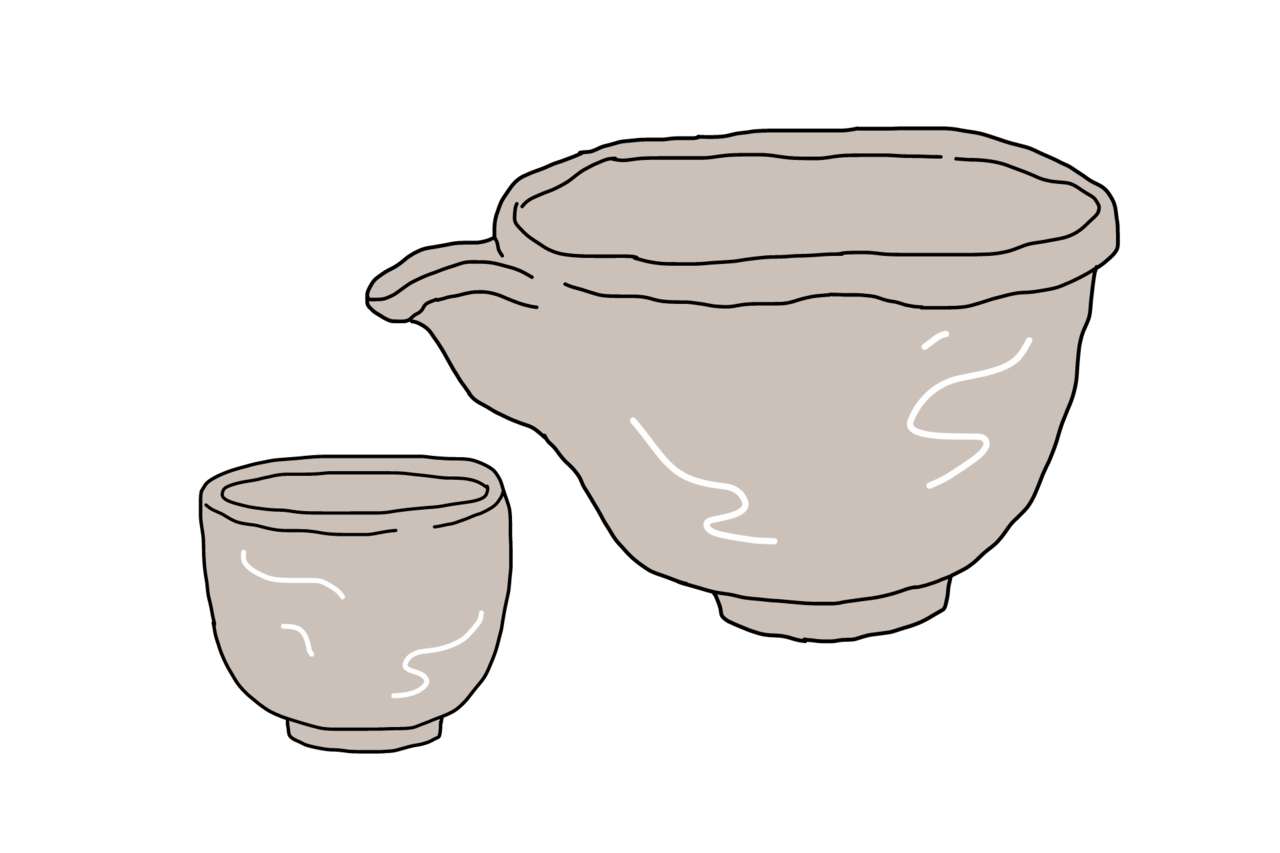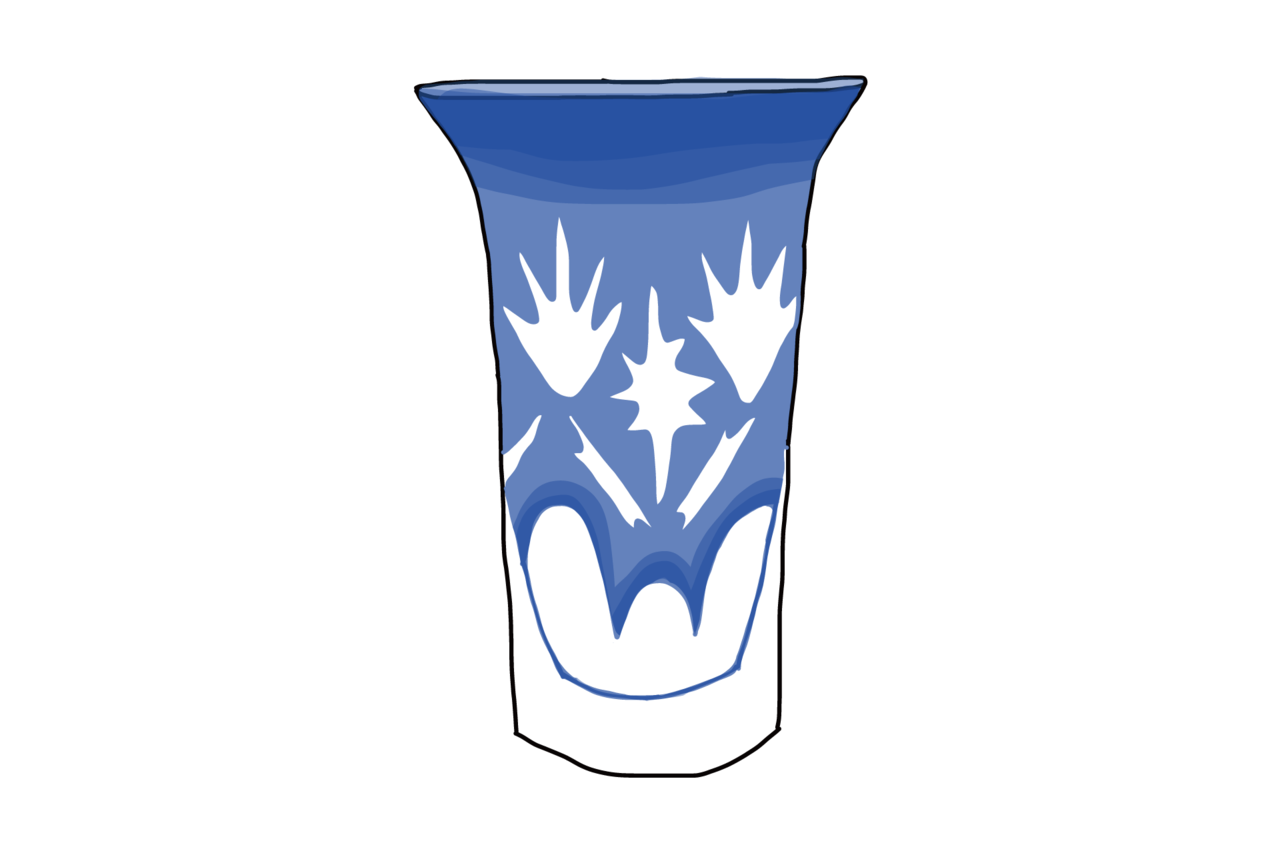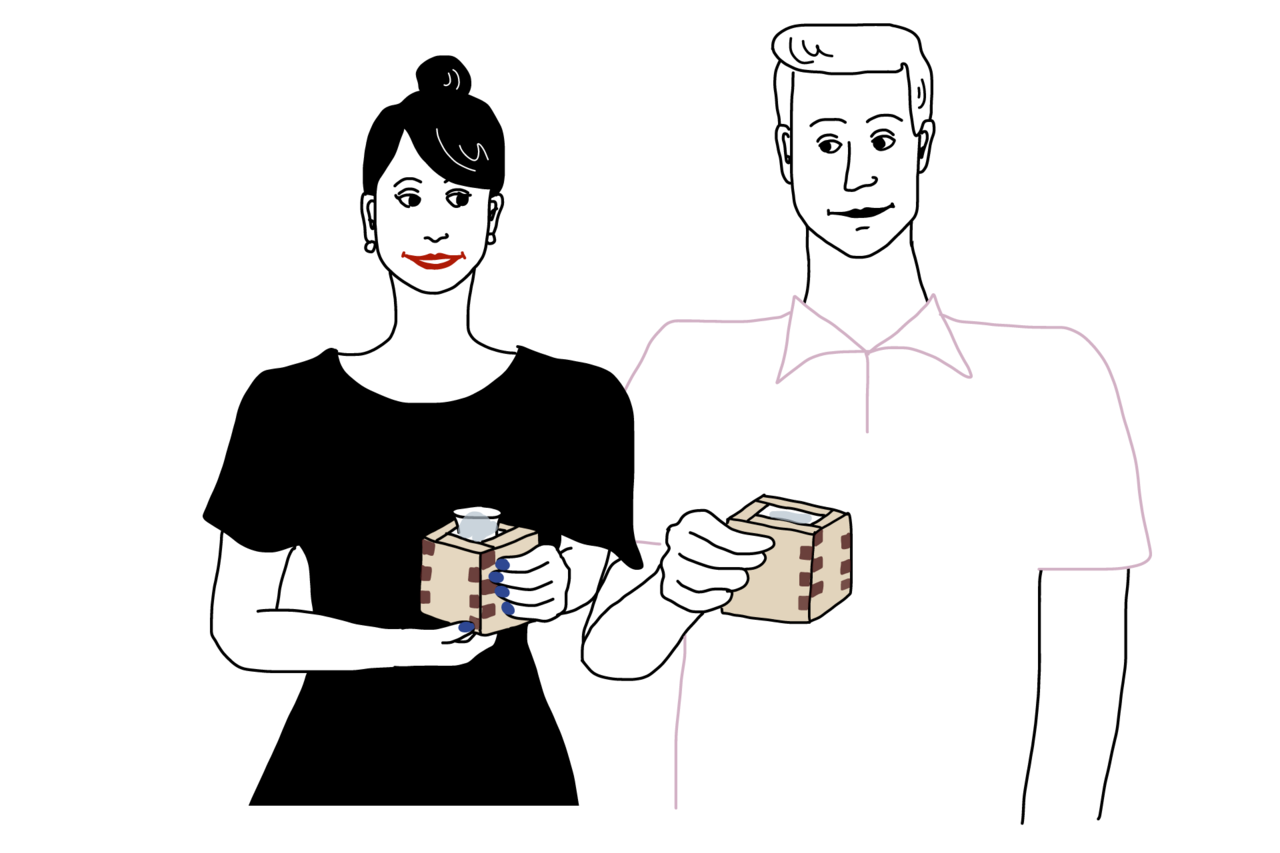
Know Your “Nihonshu”: Drinking and Serving Vessels
Guideto Japan
Culture- English
- 日本語
- 简体字
- 繁體字
- Français
- Español
- العربية
- Русский
KAORI This is kind of a traditional place, as you can see. Okay to sit on the tatami?
JOE Sure. Shoes off, right? I love this wood-and-tatami interior. Straight out of an old-time movie. I wonder what kinds of sake they serve here.
KAORI Actually, they carry only one kind—a famous brand produced near the owner’s hometown. It’s fairly common for traditional family-owned places like this one to carry just one high-quality nihonshu.
JOE Well, that’s quite a contrast with our sake bar, with its umpteen different varieties.
KAORI The sake bar is a fairly new phenomenon. I go to a sake bar or sake bistro when I feel like trying out and comparing new and different varieties of nihonshu. But an izakaya is a more traditional setting for dining and socializing. I thought you’d enjoy the experience.
JOE I love the atmosphere. And here’s the server.
Big and Little Cups
KAORI (After ordering a few dishes) I think I’d like my sake ohiya to start out.
JOE Cold?
KAORI That’s what you might think, but when it comes to sake, ohiya actually means room temperature. In the old days, you see, there were no refrigerators, so people rarely drank their sake chilled. The choice was between warmed and unwarmed sake, and ohiya meant unwarmed. The correct term for chilled sake is reishu.
(Server appears with food and sake)
JOE These are pretty big for sake cups, aren’t they? I like the feel of it, though, and the rounded shape. It kind of nestles in the palm of your hand.
KAORI It’s called a guinomi. They’re most often earthenware or stoneware, and the slightly thick walls and uneven surface make them really gentle on the lips, don’t you think? I’ve got my own little collection of guinomi at home. I like them for casual drinking, especially when I’m drinking nihonshu at room temperature. In that case, I often use a serving vessel like this one, with a wide mouth and spout. It's called a katakuchi. Compared with a tokkuri, it’s not very good at keeping sake warm, but that’s not an issue when you’re drinking it room temperature. And it’s a lot easier to fill without spilling!
JOE At the sake bar last week, we poured warm sake from a tokkuri into little tiny cups.
KAORI Ochoko, yes. That’s the ideal way to drink sake okan. The tokkuri keeps the sake warm, and since you just pour a little at a time, you can drink it down before it has a chance to cool off. The thin porcelain ochoko have a sharper feel—more elegant and formal, I think.
JOE How about chilled sake? Any special cups for reishu?
KAORI I’m partial to kiriko—Japanese cut glass. It has an icy look that suits the cold sake, and the pattern cut into the surface improves the grip. I’ll bet they have some kiriko here. Ah yes—see those sparkling colored glasses on the shelf over there? That’s kiriko.
Masu and Mokkiri
JOE And what are those little wooden boxes on the counter? Are those for drinking, too?
KAORI Yes, those are called masu. It’s a special way of serving and drinking nihonshu—masu-zake, we call it. Originally, masu were used as standard measuring vessels for things like sake and rice. The character for masu is also read shō, which is a traditional Japanese unit equal to about 1,800 milliliters. Those masu over there are a tenth of that, one gō—hence the name ichigō masu. On certain festive occasions, like weddings, you’ll sometimes see a big decorative sake barrel, which they crack open for the guests. Then they’ll serve the sake in masu like those. They’re a symbol of prosperity, good fortune, that kind of thing.
JOE So, are they just for special occasions?
KAORI Not necessarily. Some people like the woody fragrance. My dad likes to put a little salt on the corner of his masu and taste a tiny bit at a time as he drinks. Very old-school!
JOE Very cool, I would say. I have to give that a try. (To server) A masu-zake, please. How about you, Kaori? Will you join me?
KAORI Uh, well, to be honest, I find masu kind of hard to drink from, being square and all.
SERVER Might I suggest a mokkiri?
KAORI Mokkiri?
SERVER We place a glass inside a masu and fill the glass to overflowing. Mokkiri is a contraction of morikiri [filled to the brim]. You drink out of the glass, and when it's partly empty, you pour the overflow from the masu back into the glass. That way you still get the symbolism and the fragrance of the masu.
KAORI But won’t the bottom of the glass be all wet when I put it on the table?
SERVER You can use the masu as a saucer, or I’ll bring a coaster that you can put the glass on, plus an oshibori [damp washcloth] to wipe the bottom with if you like.
KAORI Well, in that case . . . Masu-zake for Joe and mokkiri for me, please.
(Server returns and pours the mokkiri for Kaori at the table.)
KAORI Oh my, that much overflow? I feel like I’m getting a big bonus!
SERVER (Smiling at Kaori) That's the idea. And it’s up to the server how much he wants to pour.
JOE (With a suspicious glance at the server) Ahem. Hey, Kaori, this is great! I love the faint woody aroma. I can see why your dad likes masu-zake. (Speaking into his masu) Maybe Dad and I can have a drink together sometime . . .
KAORI Sorry, what was that?
JOE Oh, nothing. I was just wondering where you’ll take me next time. I can’t wait!
(Originally published in Japanese. Banner and illustration by moeko)
- “Nihonshu” Now : Behind the Global Sake Renaissance
- Know Your “Nihonshu”: Understanding Sake Brewing
- Know Your “Nihonshu”: Types of Sake and Their Characteristics
- Know Your “Nihonshu”: Sake Tasting Demystified
- “Nihonshu” Now: Yamagata and the Sake Renaissance
- Know Your “Nihonshu”: Sake Wisdom for Guilt-Free Drinking
- “Nihonshu” Now: Japanese Brewery Senkin Rewrites the Sake Rulebook
- Know Your “Nihonshu”: The Many Faces of Sparkling Sake
- “Nihonshu” Now: Adventures in Creative Sake Pairing
- Know Your “Nihonshu”: How Serving Temperature Affects Flavor
- “Nihonshu” Now: How the Maker of Jikon Turned Mold Into Gold


